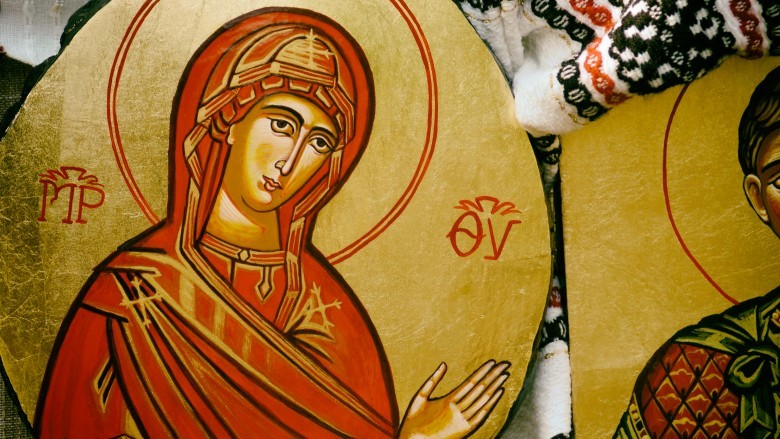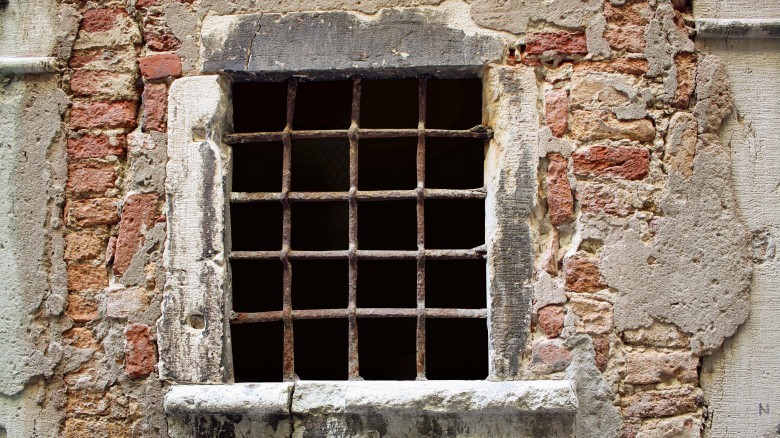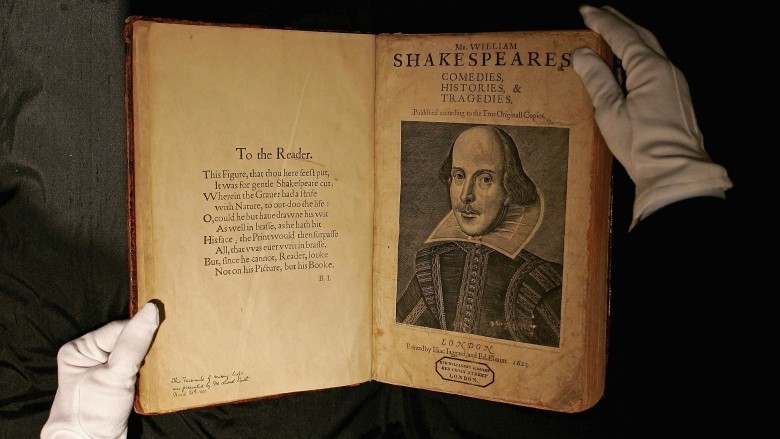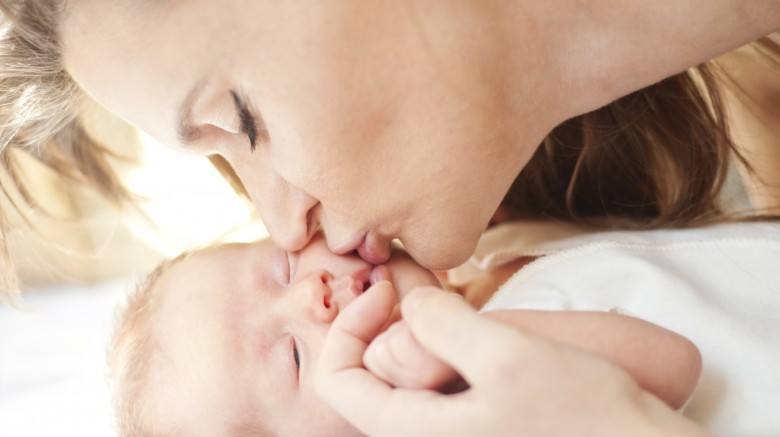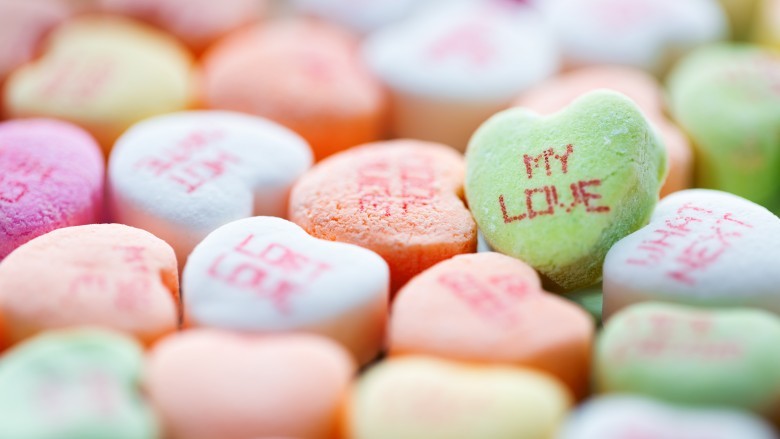The Untold Truth Of Valentine's Day
Roses, chocolates, and beautiful heart-shaped doilies are usually the images that come to mind when we think of Valentine's Day. Red hearts and heartfelt cards decorate every store, and all your coupled-up friends have a little spring in their step.
But if you're not Valentine's Day's biggest fan, take heart. It didn't start out as a day of love. Its origins lie in drunken festivals and jail cells.
Today, Valentine's Day means big business for card, flower, and candy companies. From the billions of dollars spent to the number of babies born, Valentine's Day is more than what it seems.
It all started with naked Romans
That's right, Valentine's Day did not start out with poems and chocolates. It started with a bunch of drunken, nude Romans.
Every year, the ancient Romans celebrated the feast of Lupercalia from Feb. 13-15. This pagan fertility festival celebrated an ancient god who protected the people from wolves. At the beginning of the celebration, the men would sacrifice a goat and a dog, then whip the women with the hides of those animals. Romantic, no?
During this naked, drunken party, the town's young women would get in line and wait for the men to hit them. Yep, that's right. They wanted to be hit because they believed it would make them fertile.
After a good time of being whipped with dead animals, the ladies then had a chance to be included in a matchmaking lottery. The men drew names and then were "coupled" with that woman for the night.
It's named after a saint
It's hard to go from drunkenly whipping women with animal hides to canonizing saints, but Valentine's Day did it.
In the third century, Emperor Claudius II ordered for the death of two men on Feb. 14. Their names? Valentine and Valentine. They were executed in different years, but the Catholic Church later honored them both as martyrs and named Feb. 14 St. Valentine's Day.
Then in the fifth century, Pope Gelasius I decided to combine St. Valentine's Day with that crazy Lupercalia festival in an effort to get rid of the pagan tradition. The festival was incredibly popular, so the Christians may have figured, if you can't beat 'em join 'em. "So there's reason to think that the Christians might instead have said, OK, we'll just call this a Christian festival," Noel Lenski, a historian at the University of Colorado at Boulder told National Geographic.
Not surprisingly, the festival didn't die there. "It was a little more of a drunken revel, but the Christians put clothes back on it," Lenski told NPR. That didn't stop it from being a day of fertility and love."
The first valentines were passed in a jail cell
One of the Valentines who became a martyr was a Roman priest known for standing up for love. Emperor Claudius II (who later ordered Valentine's death) was dealing with a crumbling empire in the third century. In a desperate attempt to hold it together, he decided to ban all marriages of young people because he believed single soldiers fought better than married ones. Father Valentine was not a fan of this idea and continued to perform marriages in secret. Once he was caught, he was imprisoned and later killed.
During his time in jail, legend has it that young children used to visit and pass him notes into his jail cell.
Shakespeare made it a little sweeter
We have Shakespeare to thank for transforming Valentine's Day into a day to celebrate romantic love. He and Geoffrey Chaucer wrote about the holiday as a day to celebrate romantic love, and their sweeter take on it started to become popular. Shockingly, none of the ladies minded ditching the naked party.
Chaucer spoke about the holiday in his poem "The Parliament of Fowls." To celebrate the engagement of Richard II of England to Anne of Bohemia, he wrote in his poem, "For this was on St. Valentine's Day/When every fowl cometh there to choose his mate."
Shakespeare also worked the holiday into his writing. In Hamlet, Ophelia says, "To-morrow is Saint Valentine's day/All in the morning betime/And I a maid at your window/To be your Valentine."
The cards came much later
Centuries after the holiday was established, we began sending cards to each other on Feb. 14. During the 18th century, couples in England started sending cards made of paper and lace to each other. In 1797, the book The Young Man's Valentine Writer was published to teach men how to write an appropriate love note. Might be time to bring that classic out again, am I right, ladies?
In the 19th century, factories started to mass produce paper cards. In 1913, Hallmark Cards of Kansas City offered Valentine's cards.
Valentine's Day may save your relationship
Many of us write off Valentine's Day as a Hallmark holiday, but it may be more important to you and your relationship than you realize. A study in Personality and Individual Differences found that seeing relationship reminders on Valentine's Day "enhanced perceptions of relationship functioning" in the study participants. That means that on this magical day, your relationship will feel better. You'll be more into each other, so take advantage!
However, this effect is not as strong in individuals with higher levels of "attachment avoidance." If your partner usually thinks about you throughout the day, he will probably be especially lovey dovey this February. However, if he's not returning your texts even on Valentine's Day, it's safe to say he's just not that into you.
You're more likely to go into labor
If you have a friend or two who were born on or around Valentine's Day, it's no coincidence. Studies show that pregnant women are actually more likely to go into labor on Valentine's Day than on other days. A study from the Yale School of Public Health looked into whether our positive associations of Valentine's Day and negative associations of Halloween made a difference in birth rates. Researchers found that between the years 1996 and 2006, Valentine's Day births increased by 3.6 percent and Halloween births decreased by 5.3 percent. Even more telling, the number of cesarean births increased by 12.1 percent on Valentine's Day and decreased by 16.9 percent on Halloween. Maybe the healthcare providers are also biased to the day of love.
Researchers believe that women's perceptions of a date can affect her willingness to give birth. When the pregnant ladies are getting all the feels on Valentine's Day, they may be signaling to their bodies that it's time to welcome that new little bundle of joy.
Valentine's Day is big business
Each year, more than one billion Valentine's Day cards are sent around the world. Only Christmas beats Feb. 14 for its number of cards sent. According to Nikoleta Panteva, senior analyst at IBISWorld, Valentine's Day spending added up to about $18.6 billion in 2011 with the average person spending $125.47 on gifts and candy. Men typically spend more, averaging $196.39 compared to ladies who spend around $99.87.
When it comes to Valentine's Day gifts, if it ain't broke, don't fix it. We tend to stick with the old favorites. According to the National Retail Federation, 50 percent of consumers plan to buy candy as a gift. Of those celebrating this day of love, 38 percent plan to take their dates to dinner or a show. Jewelry gifts like necklaces and earrings will bring in about $4.4 billion each year. Yes, please! We'll also spend about $1.9 billion on flowers.
So who is shelling out this kind of money? Not surprisingly, it's mostly people in relationships. About 90 percent of Valentine's Day customers are buying gifts for their significant other. Couples spend about $12 billion on each other every February. But this doesn't mean the singles should be left out. If you find yourself uncoupled this year, buy yourself a latte or nice bottle of wine. Show yourself a little love and appreciation. Or save that money and put it toward a warm vacation this winter!
The candy sales are pretty sweet, too
According to the National Confectioners Association, we're likely to spend over a billion dollars on candy this February. About 75 percent of that candy will be chocolate. That leaves just 25 percent left for everyone's favorite Valentine candy: conversation hearts. In 2009 alone, about eight billion candy hearts were made. That is over 100,000 pounds of little "Be Mine" and "Text Me" hearts.
Why do we spend so much?
When you hear about the billions of dollars spent every February, it's easy to feel a little cynical about this holiday, but don't blame Hallmark just yet. It's not the card or candy company's' fault that we spend so much in February. Behavioral economics professor Dan Ariely explained to National Geographic that it's hard not to get swept up in the Valentine's Day spending when everyone around you is shelling out for flowers and chocolates. "Herds give us a sense of what is normative behavior — not normative in terms of rational, but normative in terms of this is how people behave," he said. So if all of your coworkers plan to spend $100 on gifts, and you find yourself wondering what to do yourself, "the answer is very simple," says Ariely.
Helen Fisher, a sociologist at Rutgers University, told NPR that deep down we must enjoy buying these gifts. "This isn't a command performance," she explained. "If people didn't want to buy Hallmark cards, they would not be bought, and Hallmark would go out of business."


